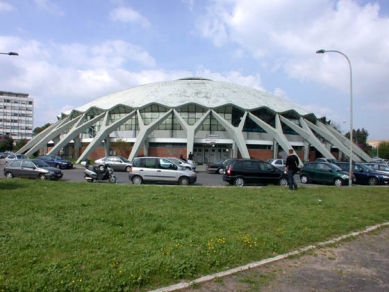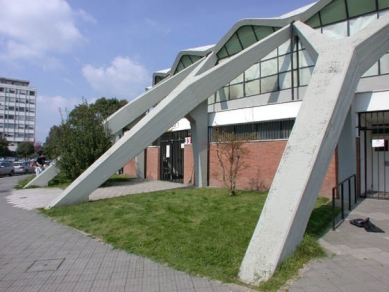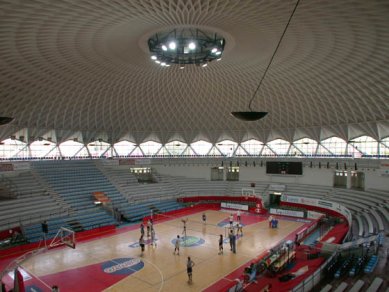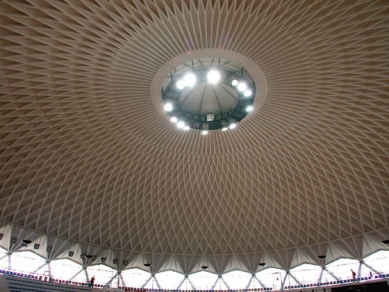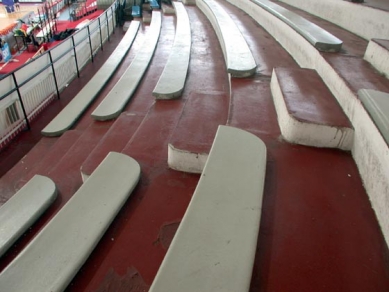
<div>Sports Hall</div>

Pier Luigi Nervi completed his greatest life works in connection with the Olympic Games held in Rome in 1960. For the realization of the Games, he designed the sports arenas: Stadio Flamino, Corso Francia, the giant Palazzo dello Sport, and also the less ostentatious Palazzetto dello Sport (Little Palace of Sport), designed in collaboration with architect A. Vitellozzi. This small sports coliseum in the Roman district of Flaminio is Nervi's most architecturally interesting example from the buildings created for the Roman Olympics.
The Little Palace is a circular building with a diameter of 78 meters. The reinforced concrete shell rests on massive sloped supports in the shape of a Y. The dome was created from prefabricated elements made of prestressed concrete, which were laid on a temporary steel structure during assembly. After the prefabricated elements were assembled, the entire structure was reinforced with an outer shell monolithic layer. Once the temporary steel structure was removed, a magnificent interior space without a single support was created.
The sports arena under the magnificent dome can accommodate 5,000 seated spectators. The internal diameter of the arena is 52 meters and is defined by a glass suspended wall, which makes the dome appear to float in space. The Little Palace of Sport is Nervi's poem in reinforced concrete, about which the author stated: "the iron discovered by man is currently the most beautiful construction material". Nervi used reinforced concrete in many forms - monolithic or prefabricated, or even prestressed. Pier Luigi Nervi is also one of the authors of the UNESCO headquarters in Paris.
The Little Palace is a circular building with a diameter of 78 meters. The reinforced concrete shell rests on massive sloped supports in the shape of a Y. The dome was created from prefabricated elements made of prestressed concrete, which were laid on a temporary steel structure during assembly. After the prefabricated elements were assembled, the entire structure was reinforced with an outer shell monolithic layer. Once the temporary steel structure was removed, a magnificent interior space without a single support was created.
The sports arena under the magnificent dome can accommodate 5,000 seated spectators. The internal diameter of the arena is 52 meters and is defined by a glass suspended wall, which makes the dome appear to float in space. The Little Palace of Sport is Nervi's poem in reinforced concrete, about which the author stated: "the iron discovered by man is currently the most beautiful construction material". Nervi used reinforced concrete in many forms - monolithic or prefabricated, or even prestressed. Pier Luigi Nervi is also one of the authors of the UNESCO headquarters in Paris.
The English translation is powered by AI tool. Switch to Czech to view the original text source.
0 comments
add comment


